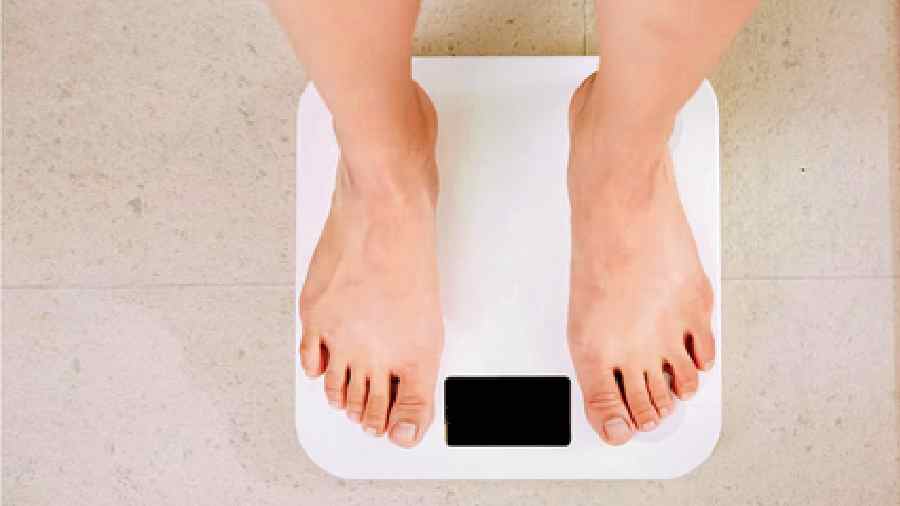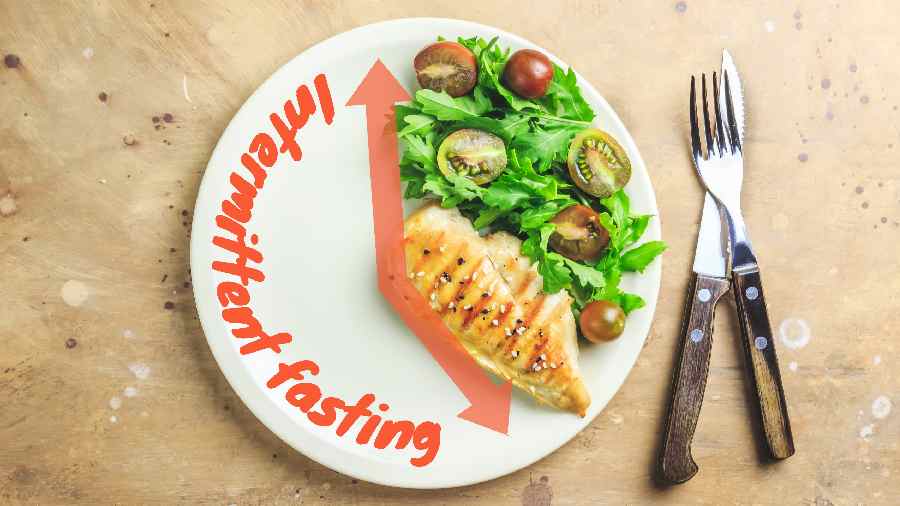Intermittent Fasting (IF) is the new packaged name for the age-old practice of fasting. For years, our ancestors have been fasting, whether for religious purposes or due to food scarcity. What’s fairly new is the research behind IF on health and longevity, which is making it the end-all and be-all of nutrition and fitness. From B-town celebrities to social media influencers, IF seems to have garnered a huge fan following, enough to pique one’s curiosity. In the most simplified way, IF is a practice of occasionally going for extended periods without eating. The time from one’s last meal of the day until the next meal is termed as the fasting period, and the time from one’s first meal of the day to the last meal is termed as the feeding period. For example, if one eats dinner at 8pm and has the next meal at 8am, then he is fasting for 12 hours and the feeding interval is also 12 hours. Intermittent Fasting sounds very intriguing but there are many questions around it.
How long does one fast? What can one eat or drink during the fasting period? What should one eat during the feeding window? Hence, let’s decode this popular and widely followed diet trend.

The different ways of practising Intermittent Fasting are:
Alternate Day Fasting: In this type, one needs to fast every other day. For example, fasting starts on Monday 8pm and ends on Wednesday 8am. So, the fasting window is 36 hours and the eating window is 12 hours, from 8am to 8pm on Wednesday.
Eat Stop Eat: On this plan, one fasts for a full 24 hours, one-two times a week, eating mindfully the rest of the week.
Warrior Diet: On this plan, the fasting window is 20 hours and the feeding window is four hours each day.
The Lean Gain Method: This is the most popular way of practising Intermittent Fasting and is also called the 16/8 fasting method. The basic rules for this kind of fasting are as follows:
Fast for 16 hours every day, eat within the eight hours window every day. Exercise with high intensity, at least two-three times per week, often in the fasting state.
On workout days, eat two-three meals consisting of proteins, vegetables and carbohydrates. Eat the largest meal of the day directly post-workout.
On non-workout days, eat two-three meals consisting of proteins, veggies, and fats. The total calorie intake in the feeding window depends on one’s specific health goals.
How does one get started?
Shrink the eating window and expand the fasting window: we all fast for around eight hours when we sleep. Instead of jumping onto 16 hours of straight fasting, increase gradually to 10 hours and so on. Likewise, the usual feeding window of 12-16 hours can be gradually narrowed to 10-12 hours.
What is the right time to fast?
The right time to fast depends on one’s schedule. It’s easier for a morning person to shift most of the meals to the first half of the day and fast during the later half of the day. Similarly, people who usually stay up late at night and wake up late in the morning, could do with shifting the fasting period to the first half of the day and enjoying their meals in the second half. The idea is to customise the way one fasts as per their needs and preferences.
What does one eat while practising IF?
In the fasting window, it is recommended to keep the calorie intake under 30-40kcals. That leaves one with very few low-calorie or zero-calorie options such as water, black tea or coffee, green tea, electrolyte water, lemon water and diet colas (zero-sugar ones). In the feeding window, the diet can be customised as per an individual’s specific health goals. IF discourages people from grazing or taking small, frequent meals and promotes eating two-three big meals instead. The calorie balance needs to be maintained if weight loss is the intention for practising IF.



What are the benefits of intermittent fasting?
• Could help in weight loss if done correctly: Intermittent Fasting helps one stay in calorie deficit or encourages one to consume lesser calories by skipping one-two meals a day or fasting one-two days in a week. Thus, it could result in weight loss if one is mindful of the calories consumed in the feeding window.

• Mood and energy: In the initial days, one could feel less focused due to negative energy balance, however, our bodies have great adaptability. After 10-14 days, the energy and focus improves to a great extent. People have also shown great energy during workouts on an IF program.
• Better relationship with food: When one commits to certain hours or an entire day to fasting, it is realised that hunger is not an emergency. We are all equipped to deal with it, hence, the panic or the immediate need to eat something if hunger is felt, becomes more controlled. It is also common to get confused between physiological (body) hunger and psychological (head) hunger. When one fasts for a certain period of time, real physiological hunger is felt and that feeling can be used as a reference point in the future to interpret one’s appetite correctly.
• Better Health Markers: IF has shown to reduce blood pressure, blood lipids, inflammation and insulin sensitivity. It is also shown to improve cardiovascular function.
All of these can be attributed to the intake of fewer calories and eating a diet lower in processed foods, chemicals and pollutants achieved due to fasting.
• Builds Discipline: Most diets fail due to lack of discipline. IF helps in making people feel more in control of their habits. If the feeding window has not started, most people are successful in turning down food or suppressing unnecessary cravings due to the sense of commitment. This creates routine, helps in building discipline and teaches one the importance of saying no to unnecessary grazing.
But as interesting as it sounds, IF is not for everyone. Who should avoid it? We help you decode:
• For someone who is new to exercise and nutrition, it’s strongly recommended that they practice the basics of nutrition and healthy living before trying out something as advanced.

• Pregnant or breastfeeding women have higher energy demands. Hence it’s not a great idea for them to start or continue practising IF.
• It is not recommended for people who have a history of eating disorders or are currently trying to heal from it.
• People with low blood sugar or low blood pressure should not be trying this approach.
• People with gastric issues might feel more gassy or acidic when staying hungry for prolonged hours.
IF is one of the many popular nutrition styles that work. However, it only “works” when it’s intermittent, flexible, and a part of one’s normal routine, not if it feels like a chronic source of physical and psychological stress. It is also important to consistently self-monitor the energy levels, moods, workout performance, sleep quality, and hormone health. This gives a better understanding of whether the programme is suiting the individual or not. IF could be quite effective, however, it is not a magical diet or a shortcut to weight loss.
Maintaining a healthy and active lifestyle would still be a priority, irrespective of any eating pattern or diet that is followed.

Neha Patodia and Nupur Arya
Nutrimend is a diet consultancy clinic founded by sister duo Neha Patodia and Nupur Arya in 2016
